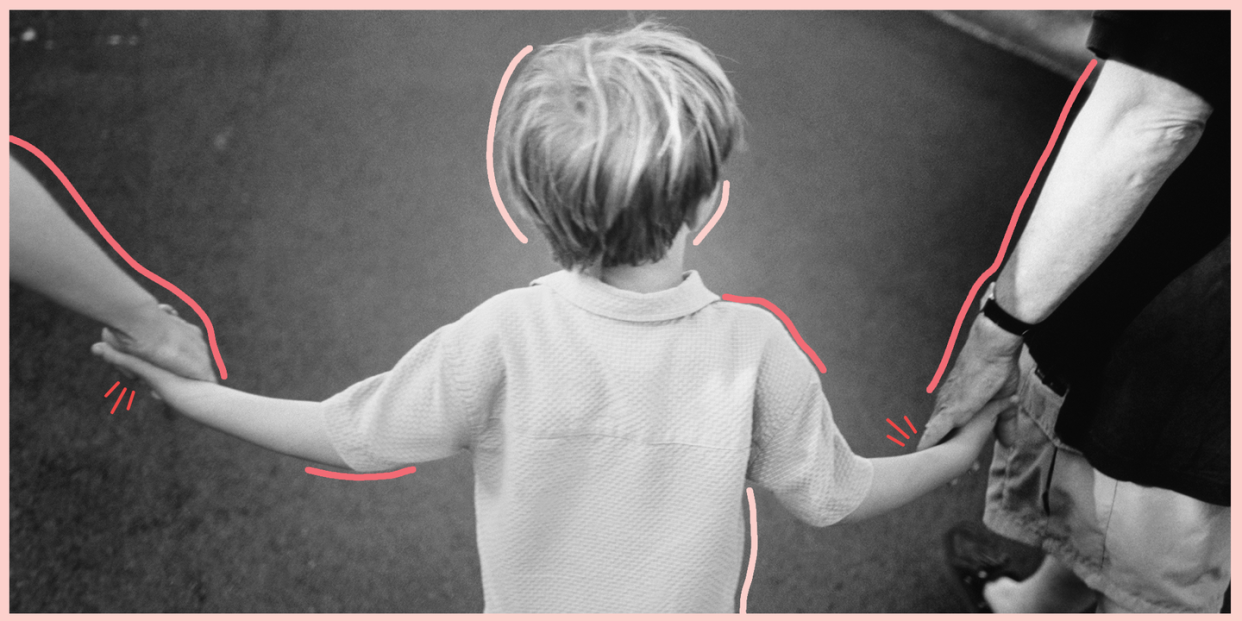Our Kids Were Getting Lots of Time-Outs, so We Asked Them to Help Us Create Solutions

Like most moms, I hate punishing my kids. But when they keep repeating the same bad behavior over and over again, is there really a way around it? Recently, it felt as though my husband and I just kept punishing our kids for the same various offenses. Honestly, it created a relationship that felt far too authoritarian for my liking.
So, we went in search of a different way, and after reading How to Talk so Kids Will Listen ...And Listen So Kids Will Talk by Adele Faber and Elaine Mazlish, we found it. Instead of giving a consequence for your child’s action, Faber and Mazlish write, families should come up solutions together by making a list.
When we punish our kids, the emphasis is on the bad actions they keep doing. This creates a negative atmosphere—one that I was sick of. As family therapist Haley Sztykiel, L.M.S.W., S.S.W., says, “Punishment is used as a tool to teach children that a behavior that is unwanted or not needed. But many times, an alternative or positive behavior isn’t provided. The child knows what not to do, but may not understand what they should do instead.” Coming up with solutions to correct the behavior together shines positive light on the situation—and the whole family dynamic.
I was skeptical it would work, but I was willing to try almost anything. Problem No. 1: My small children kept waking us up every morning—even on the weekends (sigh). So, we made our first list.
Some of their suggestions were a little crazy, like, “Sing the birthday song until our parents wake up!” But the point is to take turns coming up with ideas—and write all of the suggestions down—so that everyone feels heard. Next, we crossed out the solutions that didn’t work for either the kids or the adults. (So long, birthday song.) Finally, after compiling our list, we came to an agreement: The kids were allowed to get up whenever they wanted, but if our door was shut, it meant they had to play quietly or turn on a cartoon in the family room.
Because they partook in coming up with solution, it’s worked (with a couple of stumbles, of course). Hallelujah, we’ve been able to sleep in past 7 a.m.
The list idea has worked in other problem-solving situations in our home too. We used it to help the kids to do their homework. Each child came up with a plan as to where and when they would do their assignments. Because they took ownership over the ideas, they follow their plans. We’ve used it to solve sibling squabbles, too: For example, if they both want to play with a toy that can’t be shared, then they created the game plan as to who uses it when, and for how long. The control is in their hands.
Sztyiel says this method ensures “the child feels invested in the plan, identifies a sense of responsibility, and feels pride in successfully using problem-solving skills."
She’s right: List-making has empowered my kids and taken stress off of my husband and me. We’re no longer the ones who are always hovering around and pointing our fingers at them. (Although yes, it still happens from time to time.) This approach is much gentler. The best part? The relationships with our children have blossomed because the respect has bloomed, too.
The simple fact that our kids aren’t hearing our booming voices shouting at them as often has helped a lot. They feel that their parents hear their opinions more and trust them to come up with their own solutions. They understand that we believe in them and want to hear what they have to say. In the long run, I hope this is giving them the confidence to solve problems in the real world—without Mom or Dad.
You Might Also Like

